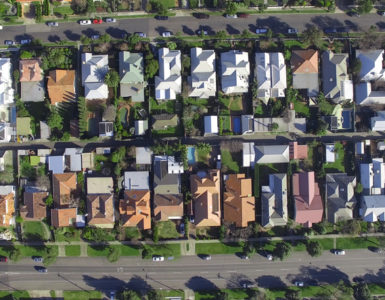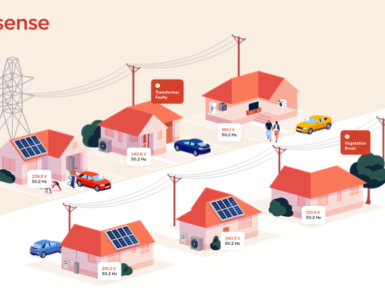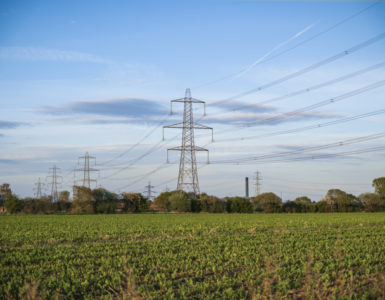The deployment of smart meters across the European Union has been a journey marked by both progress and challenges. Mandated by EU legislation since 2009, the rollout of these meters was expected to revolutionise how consumers interact with energy usage.
However, the reality has fallen short of expectations, with smart meter penetration currently standing at around 56% in the EU, missing the target set for 2020.
Unequal roll-out across Member States has resulted in unequal opportunities for consumers. While some countries have surpassed the 80% target with roll-out rates exceeding 90%, others lag, leaving their citizens at a disadvantage. This discrepancy impedes consumers’ ability to actively participate in the energy transition, manage costs, and engage effectively with their energy usage.
To address these issues and maximise the benefits of smart metering, several key recommendations emerged during ESMIGs recent Smart Metering Forum at E-world.
- Clear, Ambitious, and Binding Targets: Setting a clear target for smart meter roll-out completion by at least 80% for all Member States by 2030 is essential. This ambitious goal provides a framework for consistent progress across the EU, ensuring no consumer is left behind.
- Performance Standards: It’s crucial to set EU-wide performance standards for smart meters to ensure they possess the necessary functionalities and are utilised to their full potential. This not only benefits distribution system operators but also empowers consumers to make informed decisions about their energy consumption.
- Unlocking Data: Smart meter data holds great potential for improving system efficiency, reducing consumption, and empowering consumers. Leveraging real-time data insights can significantly enhance the effectiveness of smart meters.
Following an exploration of EU-wide recommendations, two panel discussions followed, first focussing on the smart meter roll-out more broadly and secondly, innovative data strategies to support the energy transition. Dr. Jason Humphries, Operations Director for Sense, spoke specifically about ‘Unlocking Data’ in the latter session.
He emphasised during his panel session that with a small uplift in meter technology, the next generation smart meters, embedded with grid edge intelligence, can deliver the energy transition in Europe at a radically lower cost and faster pace. Meters capable of processing high-resolution data in real-time enable grid visibility and demand flexibility at scale.
He cited real-world global examples of how these next generation capabilities are delivering results today and how this could support European Distribution Network Operators (DNOs) in optimising their own grid operations:
Engage customers with personalised energy insights
To manage an increasingly complex grid, we need the support of consumers and the Sense app can unlock this for DNO’s. It does this by giving consumers a product of genuine value. Providing them with a personalised tool to identify how much consumption individual appliances are using in real-time. With this insight, users find it easy to reduce their consumption, find energy savings and benefit from greater home awareness.
An average consumer reduces their bill by 8-10%, with the most engaged achieving enduring savings of 25%
Manage domestic flexibility with behavioural and connected demand response.
Homes account for 25% of global electricity consumption, and yet this stock of flexible load remains untapped. However, this long tail of load can be unlocked, reducing power, balancing and infrastructure costs. The key is consumer engagement. When consumers are engaged, retain control and provide consent over their energy usage they are more likely to participate in demand response programmes.
A well designed demand response system needs accessible loads, irrespective of whether heating systems are active or EV’s are at home with depleted batteries. Achieving this requires the ability to shift demand across a broader set of appliances. While some loads may be ‘smart’ and directly controllable, a significant portion of household appliances will be older, non-connected appliances, that need shifting via behavioural nudges.
So, how do we efficiently and effectively harness the potential of these unconnected loads through behavioural demand-side response?
Historically, this has presented challenges. However, with real time device detection, the scope for load shifting through this approach has hugely increased.
In our experience, once a consumer is engaged, Sense can send them personalised nudge messages asking them to turn down (or up) specific appliances. Sense can identify the most discretionary devices that a consumer could turn down, including these legacy non-connected appliances such as ovens, water heaters, laundry, AC units, stoves, etc., in addition to the obvious suspects like connected EV chargers.
Sense has found that shifting load is more successful when the consumer is told exactly what to do. In fact, it’s nearly 3x better than the previous best-in-class.
Sense users reduced consumption by 18% compared to 6% in typical DR programmes.
Furthermore, understanding individual devices in real-time enables visibility behind the meter. In this example, below, we can see 200 EV’s charging in Sense homes; we’re able to see exactly when an EV is charging. This level of detail can also be provided for heat pumps, hot water heaters, AC’s etc. With this real-time information Sense can support DNO’s to optimise their power purchasing and prioritise network investment.
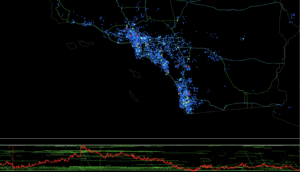
Shaving 0.3KW off peak load per home, would be the equivalent to 12.6GW across Germany.
Reduce power and operational costs with grid edge analytics and forecasting.
Sense supplies real time voltage, frequency, waveform, total harmonic distortion, and power quality data to network operators, helping to manage a more complex grid.
This level of insight enables the detection of faults on the grid, such as identifying and locating vegetation brush or corrosion of assets like transformers. During the forum, Dr Humphries presented an example of grid fault detection in Maui, Hawaii. Sense identified an issue with the grid due to fluctuations in the low voltage network nearly 6 hrs before the first reported fire in Lahaina, Maui on 8th August 2023.
With this level of visibility, operations teams could send representatives to specifically identified fault areas to investigate the issue further and tackle potentially catastrophic issues with urgency, rather than allocating resources to broader regions where faults might be limited and could be re-prioritised.
Next steps
In summary, as the EU expands and accelerates its smart meter deployments, DSO’s should explore global trends in metering including the opportunities afforded by advanced technologies like Sense. By investing in advanced metering infrastructure (AMI 2.0) and utilising high-resolution technologies (1MHz) and data analytics, utilities can unlock real-time data on energy consumption patterns, voltage fluctuations, and grid performance. This real-time data enables proactive monitoring, rapid response to outages, better forecasting and predictive maintenance, ultimately leading to enhanced reliability and efficiency of the energy system.
Stay up to date with the latest Sense news, join our newsletter here
Did you know?
Denmark, Estonia, Finland, Sweden, and Spain have completed 100% of their rollouts.
Some member states are starting their second-generation rollout, such as Italy, or are in advanced planning stages for the deployment of a next generation of smart meters — this is the case in Finland, the Netherlands, and Sweden.
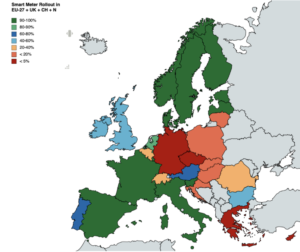
Source: ESMIG (based on data from ACER-CEER’s Market Monitoring Report (September 2023) and ESMIG’s own research)





